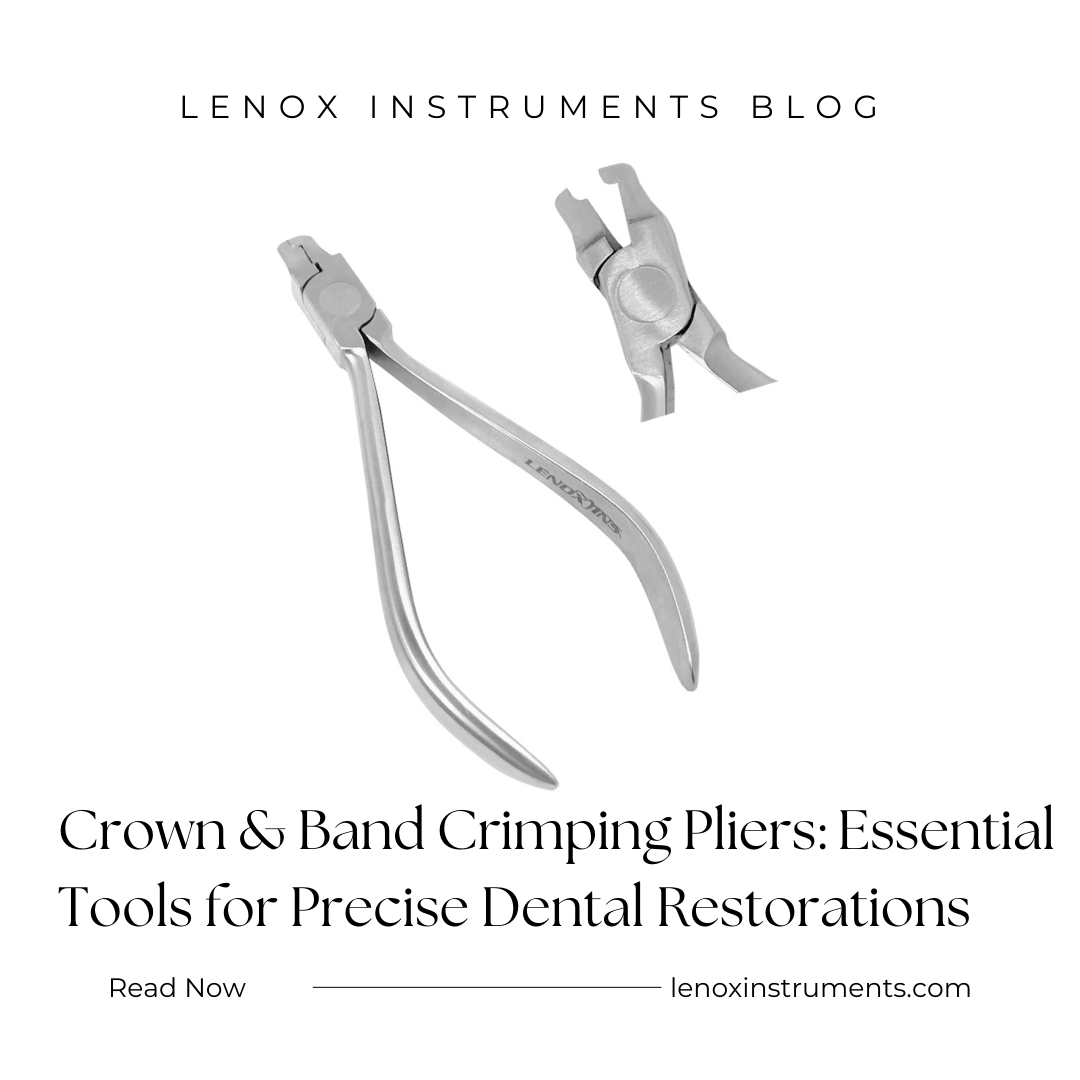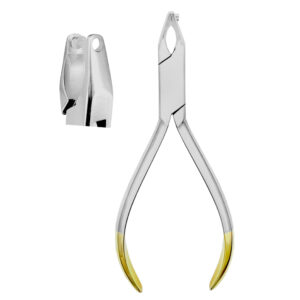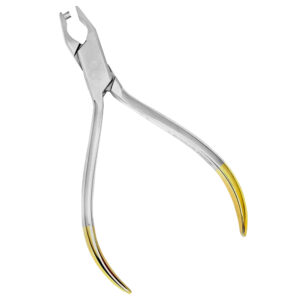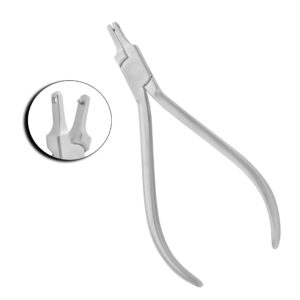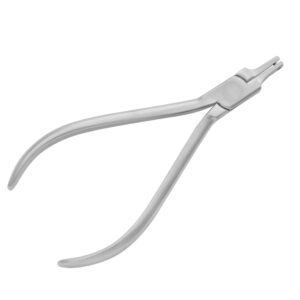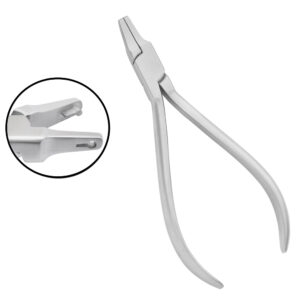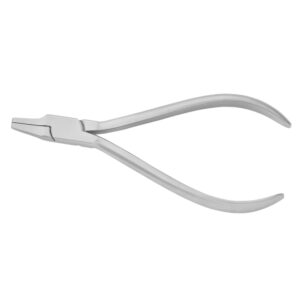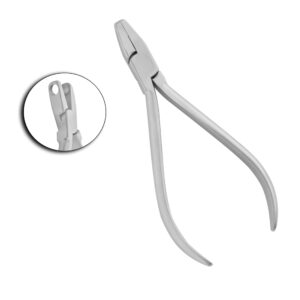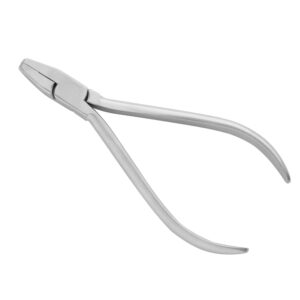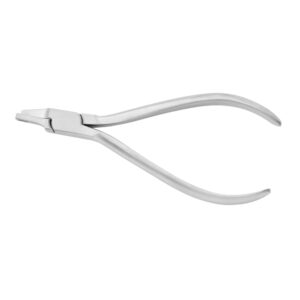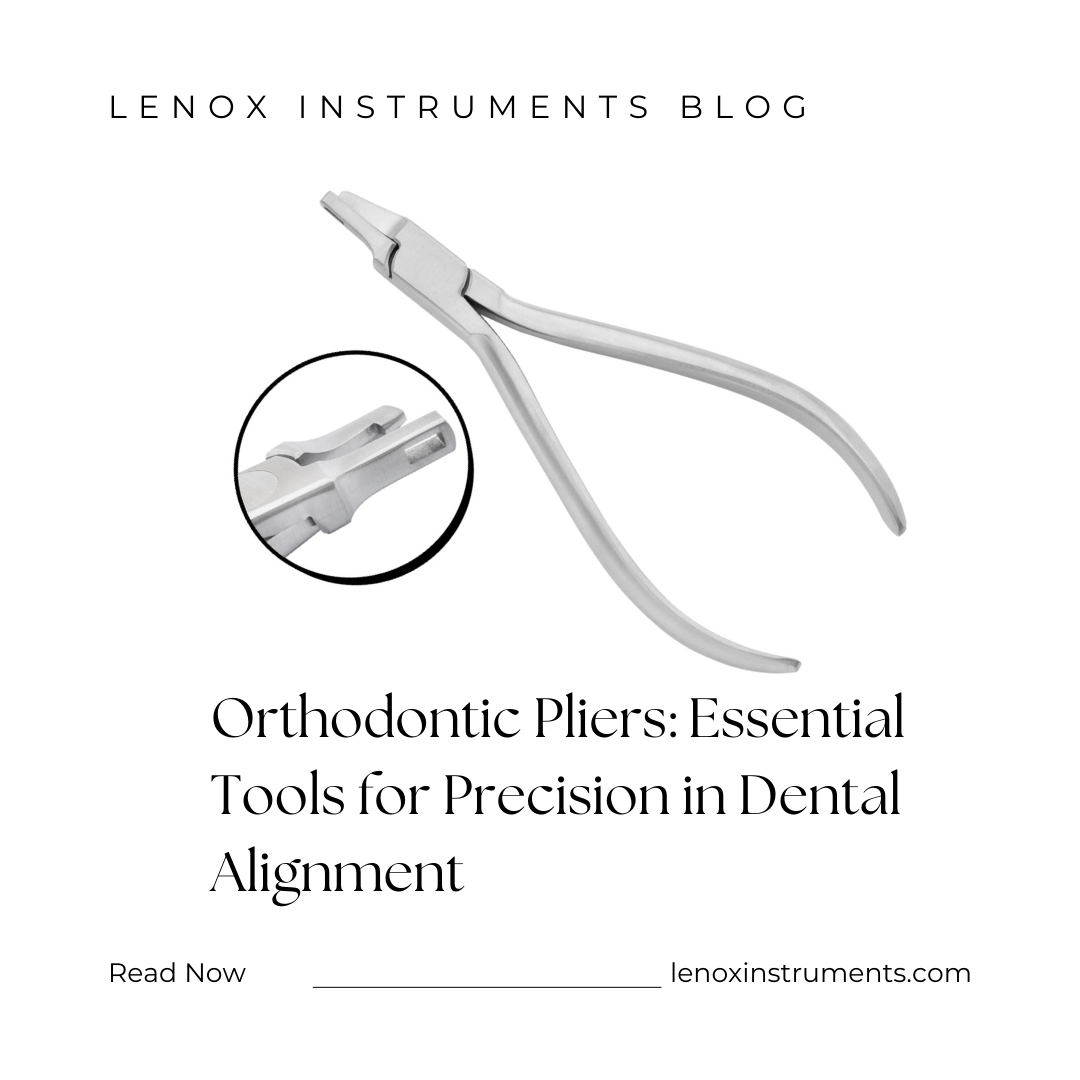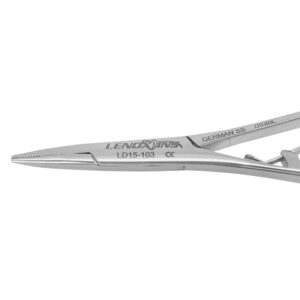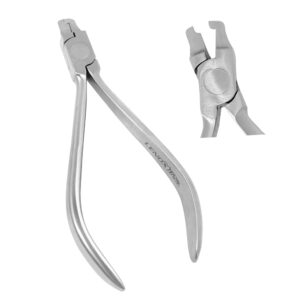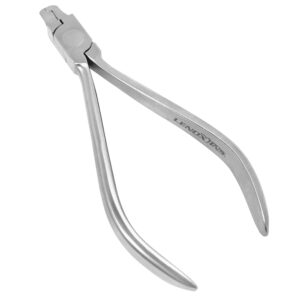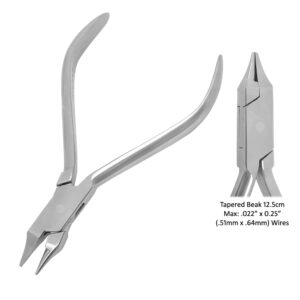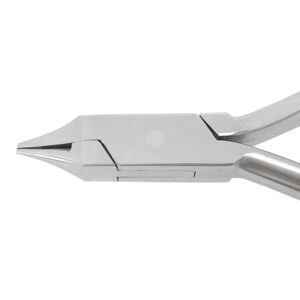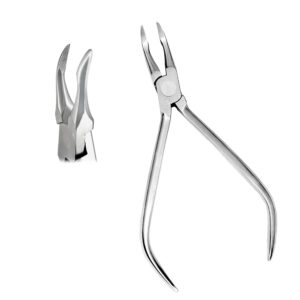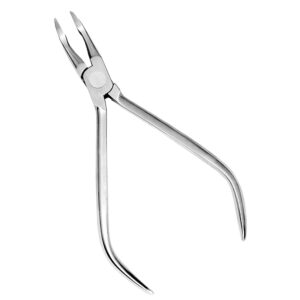Crown & Band Crimping Pliers: Essential Tools for Precise Dental Restorations
- Posted October 2, 2024
- by LENOX INC CANADA
Crown and band crimping pliers are indispensable instruments in restorative dentistry, playing a crucial role in the proper fitting and adaptation of dental crowns and orthodontic bands. These specialized pliers are designed to provide dentists and orthodontists with the precision and control needed to ensure optimal outcomes in crown and band placement procedures.
Key Features of Crown & Band Crimping Pliers
- Specialized Tips:
Crown and band crimping pliers feature uniquely designed tips that allow for precise manipulation of metal crowns and bands. The tips are typically grooved or serrated to provide a secure grip on the restoration material. - Ergonomic Design:
These pliers are engineered with ergonomic handles to reduce hand fatigue during prolonged use, allowing for better control and comfort during procedures. - Durable Construction:
High-quality crown and band crimping pliers are typically made from surgical-grade stainless steel, ensuring longevity and resistance to corrosion through repeated sterilization cycles. - Various Sizes and Styles:
Crimping pliers come in different sizes and styles to accommodate various tooth sizes and restoration types, from pediatric to adult applications. - Spring-Loaded Handles:
Many models feature spring-loaded handles for easy opening and closing, improving efficiency during procedures.
Orthodontic Pliers
-
Hole Punch Cutter 3MM – Orthodontic Retainer Invisible Brace Clear Aligner Pliers – Precision Tool for Aligner Adjustments
Rated 0 out of 5CA$120Discover the Hole Punch Cutter 3MM - Orthodontic Retainer Invisible Brace Clear Aligner Pliers by Lenox Instruments, a premium orthodontic tool designed for precise aligner adjustments. Trusted by professionals in Canada, USA, UK, Australia, and Europe. -
Mini Dot Dimple – Orthodontic Retainer Invisible Brace Clear Aligner Pliers – Precision Tool for Aligner Adjustments
Rated 0 out of 5CA$120Discover the Mini Dot Dimple - Orthodontic Retainer Invisible Brace Clear Aligner Pliers by Lenox Instruments, a premium orthodontic tool designed for precise aligner adjustments. Trusted by professionals in Canada, USA, UK, Australia, and Europe. -
Tear Drop Cutter – Brace Aligner Plier – Precision Tool for Clear Aligners
Rated 0 out of 5CA$120Discover the Tear Drop Cutter - Brace Aligner Plier by Lenox Instruments, a premium orthodontic tool designed for precise adjustments of clear aligners and braces. Trusted by professionals in Canada, USA, UK, Australia, and Europe. -
Clear Aligner Adjustment Kit – Ortho Clear Aligner Pliers Set – Comprehensive Orthodontic Tool Collection
Rated 0 out of 5CA$700Discover the Clear Aligner Adjustment Kit - Ortho Clear Aligner Pliers Set by Lenox Instruments, a premium orthodontic tool collection designed for precise aligner adjustments. Trusted by professionals in Canada, USA, UK, Australia, and Europe.
Applications in Dentistry
Crown and band crimping pliers serve several essential functions in dental practice:
- Adapting Stainless Steel Crowns:
These pliers are crucial for contouring and adapting prefabricated stainless steel crowns to fit precisely on prepared teeth, especially in pediatric dentistry. - Adjusting Orthodontic Bands:
Orthodontists use these pliers to crimp and adjust metal bands around teeth, ensuring a snug fit for optimal orthodontic treatment. - Refining Crown Margins:
Crimping pliers help in refining the margins of metal crowns, improving the fit and reducing the risk of microleakage. - Contouring Temporary Crowns:
They are useful in shaping and adapting temporary crowns made from aluminum or other malleable materials. - Emergency Repairs:
In some cases, these pliers can be used for minor adjustments or emergency repairs of metal restorations.
Proper Use and Technique
To maximize the effectiveness of crown and band crimping pliers:
- Select the appropriate size and style of pliers for the specific tooth and restoration.
- Ensure the restoration is properly seated before crimping.
- Apply gentle, controlled pressure to avoid over-crimping or damaging the restoration.
- Work systematically around the crown or band to ensure uniform adaptation.
- Check occlusion and marginal fit after crimping and make additional adjustments as needed.
Lenox Dental Pliers
Crown and band crimping pliers are indispensable instruments in restorative dentistry
-
Hole Punch Cutter 3MM – Orthodontic Retainer Invisible Brace Clear Aligner Pliers – Precision Tool for Aligner Adjustments
Rated 0 out of 5CA$120Discover the Hole Punch Cutter 3MM - Orthodontic Retainer Invisible Brace Clear Aligner Pliers by Lenox Instruments, a premium orthodontic tool designed for precise aligner adjustments. Trusted by professionals in Canada, USA, UK, Australia, and Europe. -
Clear Aligner Adjustment Kit – Ortho Clear Aligner Pliers Set – Comprehensive Orthodontic Tool Collection
Rated 0 out of 5CA$700Discover the Clear Aligner Adjustment Kit - Ortho Clear Aligner Pliers Set by Lenox Instruments, a premium orthodontic tool collection designed for precise aligner adjustments. Trusted by professionals in Canada, USA, UK, Australia, and Europe. -
Dimple Remover – Orthodontic Retainer Invisible Brace Clear Aligner Pliers – Precision Tool for Aligner Adjustments
Rated 0 out of 5CA$120Discover the Dimple Remover - Orthodontic Retainer Invisible Brace Clear Aligner Pliers by Lenox Instruments, a premium orthodontic tool designed for precise aligner adjustments. Trusted by professionals in Canada, USA, UK, Australia, and Europe. -
Hole Punch Cutter 6MM – Orthodontic Retainer Invisible Brace Clear Aligner Pliers – Precision Tool for Aligner Adjustments
Rated 0 out of 5CA$120Discover the Hole Punch Cutter 6MM - Orthodontic Retainer Invisible Brace Clear Aligner Pliers by Lenox Instruments, a premium orthodontic tool designed for precise aligner adjustments. Trusted by professionals in Canada, USA, UK, Australia, and Europe. -
Horizontal Dimple – Orthodontic Retainer Invisible Clear Aligner Pliers – Precision Tool for Aligner Adjustments
Rated 0 out of 5CA$120Discover the Horizontal Dimple - Orthodontic Retainer Invisible Clear Aligner Pliers by Lenox Instruments, a premium orthodontic tool designed for precise aligner adjustments. Trusted by professionals in Canada, USA, UK, Australia, and Europe. -
Mini Dot Dimple – Orthodontic Retainer Invisible Brace Clear Aligner Pliers – Precision Tool for Aligner Adjustments
Rated 0 out of 5CA$120Discover the Mini Dot Dimple - Orthodontic Retainer Invisible Brace Clear Aligner Pliers by Lenox Instruments, a premium orthodontic tool designed for precise aligner adjustments. Trusted by professionals in Canada, USA, UK, Australia, and Europe. -
Vertical Dimple – Orthodontic Retainer Invisible Brace Clear Aligner Pliers – Precision Tool for Aligner Adjustments
Rated 0 out of 5CA$120Discover the Vertical Dimple - Orthodontic Retainer Invisible Brace Clear Aligner Pliers by Lenox Instruments, a premium orthodontic tool designed for precise aligner adjustments. Trusted by professionals in Canada, USA, UK, Australia, and Europe. -
Tear Drop Cutter – Brace Aligner Plier – Precision Tool for Clear Aligners
Rated 0 out of 5CA$120Discover the Tear Drop Cutter - Brace Aligner Plier by Lenox Instruments, a premium orthodontic tool designed for precise adjustments of clear aligners and braces. Trusted by professionals in Canada, USA, UK, Australia, and Europe.
Maintenance and Care
Proper maintenance of crown and band crimping pliers is essential for their longevity and effectiveness:- Clean thoroughly after each use, removing any debris or dental materials.
- Sterilize according to manufacturer’s instructions, typically using autoclave or other approved methods.
- Inspect regularly for signs of wear, misalignment, or damage.
- Lubricate moving parts as recommended by the manufacturer to ensure smooth operation.
- Store in a dry, clean environment to prevent corrosion.
Advantages of Using Crown & Band Crimping Pliers
- Improved Fit: Allows for precise adaptation of crowns and bands, reducing the risk of failure or discomfort.
- Time Efficiency: Enables quick and accurate adjustments, streamlining procedures.
- Versatility: Can be used for various restorative and orthodontic applications.
- Patient Comfort: Proper fitting of crowns and bands leads to improved patient comfort and satisfaction.
- Long-Term Success: Well-adapted restorations are more likely to have long-term success and durability.
Considerations When Choosing Crown & Band Crimping Pliers
When selecting crown and band crimping pliers for your practice, consider:- The types of restorations you commonly work with (e.g., pediatric crowns, adult crowns, orthodontic bands).
- The ergonomics and handle design for comfort during extended use.
- The quality of materials and construction for durability.
- The range of sizes available to suit different clinical needs.
- Any special features, such as interchangeable tips or locking mechanisms.


